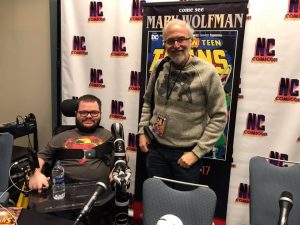‘I’m Not Broken’: Examining How Disability Is Portrayed in ‘Zack Snyder’s Justice League’

On March 18, the gargantuan blockbuster of a superhero movie known as “Zack Snyder’s Justice League” arrived on HBO Max. With its multiple storylines, ensemble of main characters, staggering four-hour run time, and history of controversies and triumphs, this film is one of the most prevalent topics in today’s pop culture scene.
As I settled in on a Friday night to watch this epic in one sitting, with my catheter hooked up, the character I was most excited to see portrayed was Victor Stone (Cyborg), played by Ray Fisher. From reading about the movie prior to its release, I knew that the character’s screen time was significantly reduced in the 2017 theatrical version. Now, with this ultimate director’s cut, viewers get a more fleshed-out backstory for this metal-man protagonist.
Created in the 1980s by comic book writer Marv Wolfman and artist George Pérez, Cyborg originated as a member of the superhero team the New Teen Titans. Having grown up watching the Teen Titans cartoon, I always loved Cyborg for his high-tech fighting abilities and iconic catchphrase “Booyah!” What I didn’t realize as a kid was that he was one of my earliest exposures to disability representation in fiction, an aspect the Zack Snyder film makes sure to address.
In the movie, Vic starts out as a high school football star at the top of his game. He has a fraught relationship with his father, Silas, played by Joe Morton. Silas is a renowned scientist who prioritizes work over attending his son’s games. When a tragic car accident leaves his mother dead and Vic on the brink of annihilation, the only thing that saves his life is his father’s technology. Silas uses an advanced system of artificial engineering to create a highly sophisticated prosthetic body for his son. Thus, Cyborg is born.
At first, Vic sees his robotic self as an aberration, an outcast in society. Even during a scene in which he uses his newfound technological abilities to transfer money into a single mother’s bank account, his appearance is met with looks of fear and horror from nearby pedestrians. He articulates his rage when he says to his father, “You know a lot about monsters, don’t you? Especially how to make ’em.”
Yet, as the story progresses, Vic decides not only to come to terms with his mechanized physical appearance, but also to embrace it. In one of several climactic moments in the film, Vic is in the middle of a dreamlike sequence in which both of his parents reach out to him. They say that he can be with them and made whole again, no longer “broken.” Vic then utters a line that instantly resonated with me: “I’m not broken.”
Boom!
In just three words, Snyder, Fisher, and screenwriter Chris Terrio captured a vital component of the disability experience. We’re not deformed, broken individuals whose bodies need correction. The fact that we use assistive technologies in our daily lives doesn’t mean we need fixing. Instead, what we need is a society that is not so quick to discriminate against and fear our cyborg bodies, but rather is willing to adapt.
While I recognize that the very nature of disability affects people differently, for me, this was one of the better cinematic depictions of a disabled character. It’s huge that the filmmakers were willing to address ableism and its impact on people in the context of a major comic book movie. To that, I say, booyah!
***
Note: SMA News Today is strictly a news and information website about the disease. It does not provide medical advice, diagnosis, or treatment. This content is not intended to be a substitute for professional medical advice, diagnosis, or treatment. Always seek the advice of your physician or other qualified health provider with any questions you may have regarding a medical condition. Never disregard professional medical advice or delay in seeking it because of something you have read on this website. The opinions expressed in this column are not those of SMA News Today, or its parent company, Bionews, and are intended to spark discussion about issues pertaining to spinal muscular atrophy.









Leave a comment
Fill in the required fields to post. Your email address will not be published.